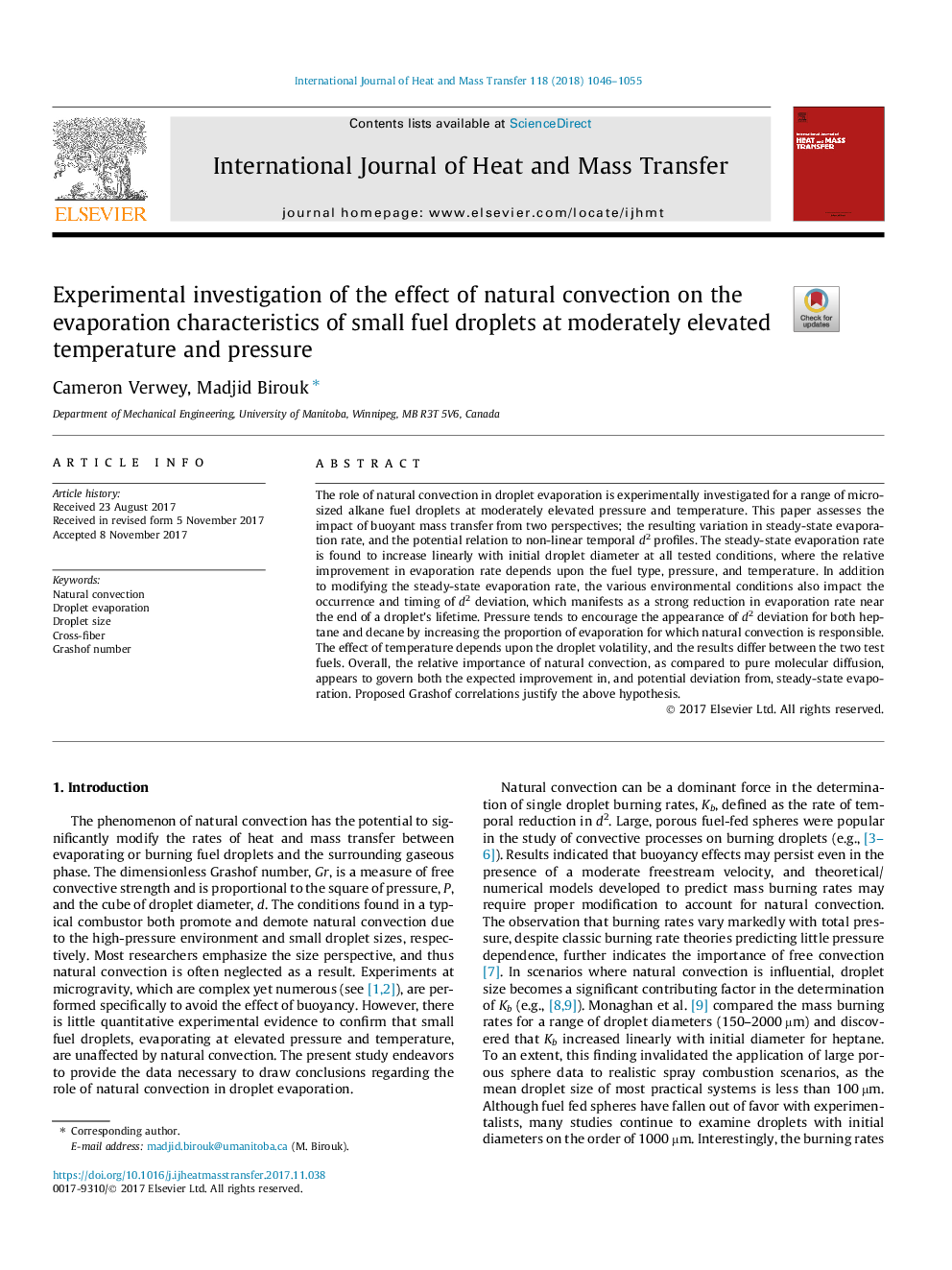| Article ID | Journal | Published Year | Pages | File Type |
|---|---|---|---|---|
| 7054820 | International Journal of Heat and Mass Transfer | 2018 | 10 Pages |
Abstract
The role of natural convection in droplet evaporation is experimentally investigated for a range of micro-sized alkane fuel droplets at moderately elevated pressure and temperature. This paper assesses the impact of buoyant mass transfer from two perspectives; the resulting variation in steady-state evaporation rate, and the potential relation to non-linear temporal d2 profiles. The steady-state evaporation rate is found to increase linearly with initial droplet diameter at all tested conditions, where the relative improvement in evaporation rate depends upon the fuel type, pressure, and temperature. In addition to modifying the steady-state evaporation rate, the various environmental conditions also impact the occurrence and timing of d2 deviation, which manifests as a strong reduction in evaporation rate near the end of a droplet's lifetime. Pressure tends to encourage the appearance of d2 deviation for both heptane and decane by increasing the proportion of evaporation for which natural convection is responsible. The effect of temperature depends upon the droplet volatility, and the results differ between the two test fuels. Overall, the relative importance of natural convection, as compared to pure molecular diffusion, appears to govern both the expected improvement in, and potential deviation from, steady-state evaporation. Proposed Grashof correlations justify the above hypothesis.
Related Topics
Physical Sciences and Engineering
Chemical Engineering
Fluid Flow and Transfer Processes
Authors
Cameron Verwey, Madjid Birouk,
